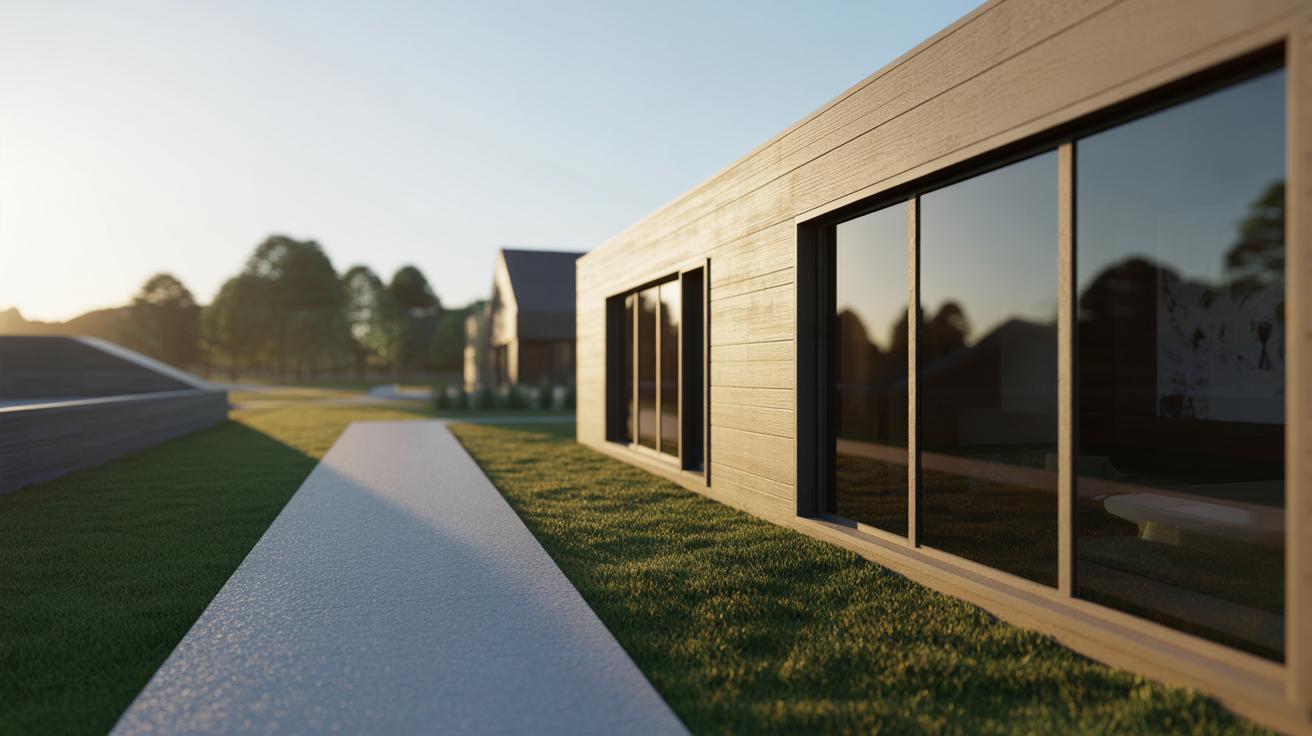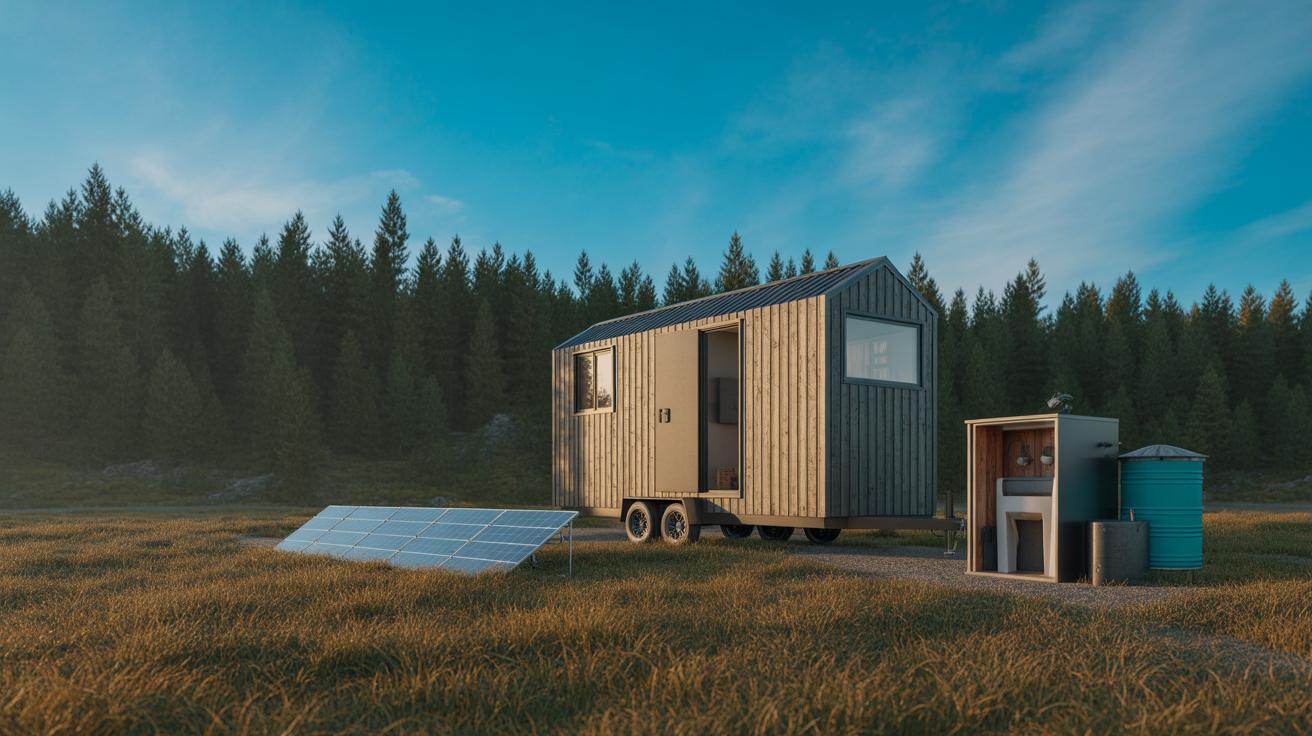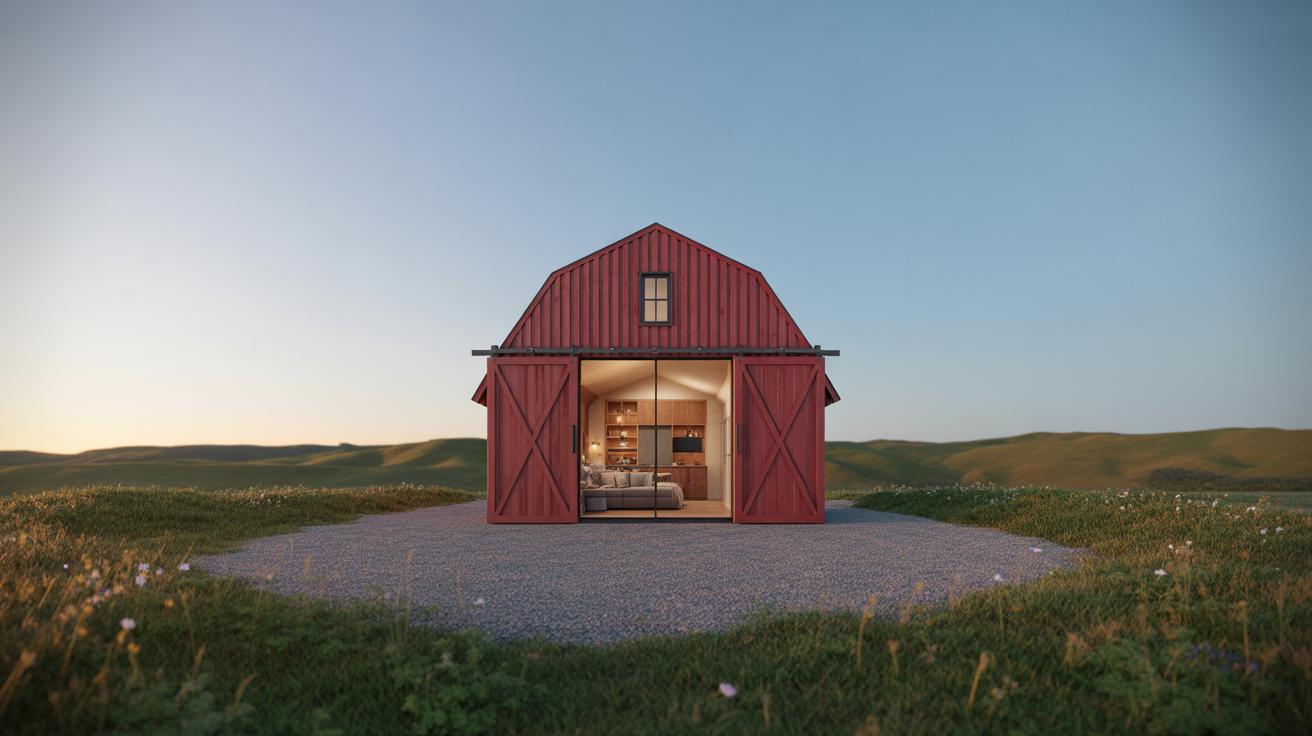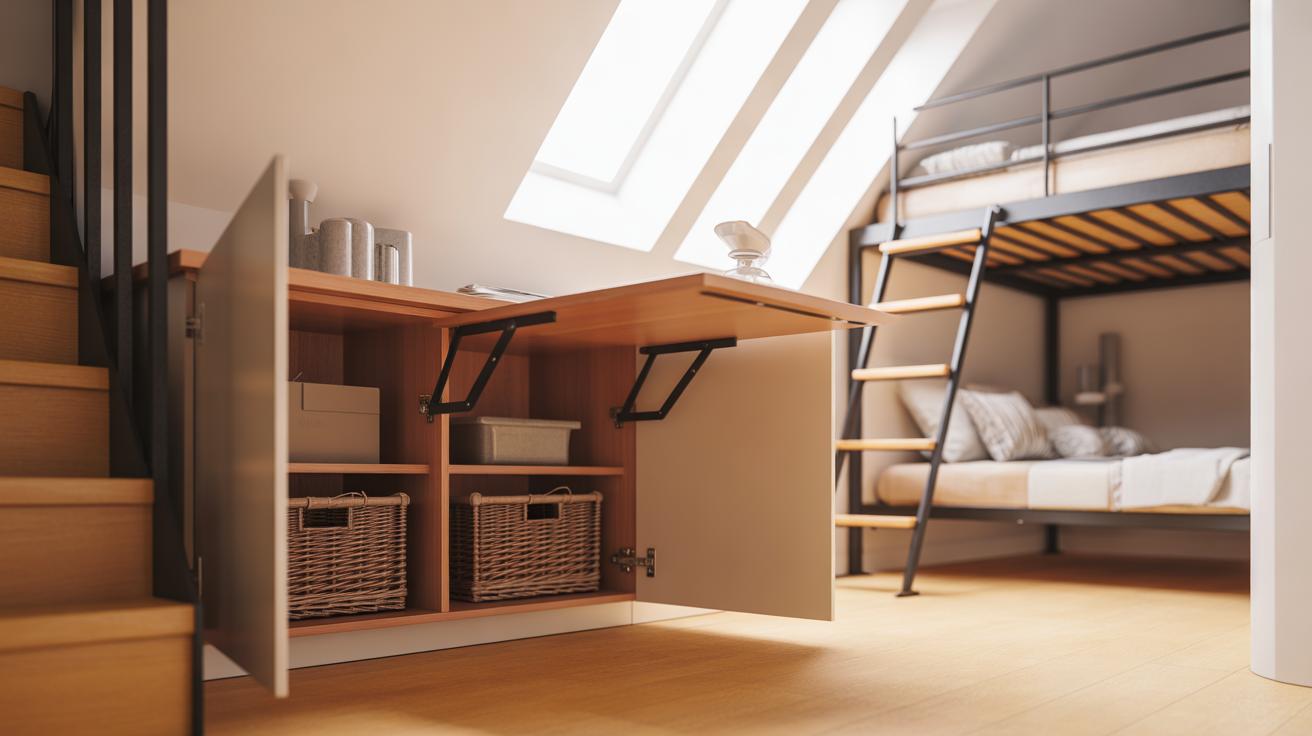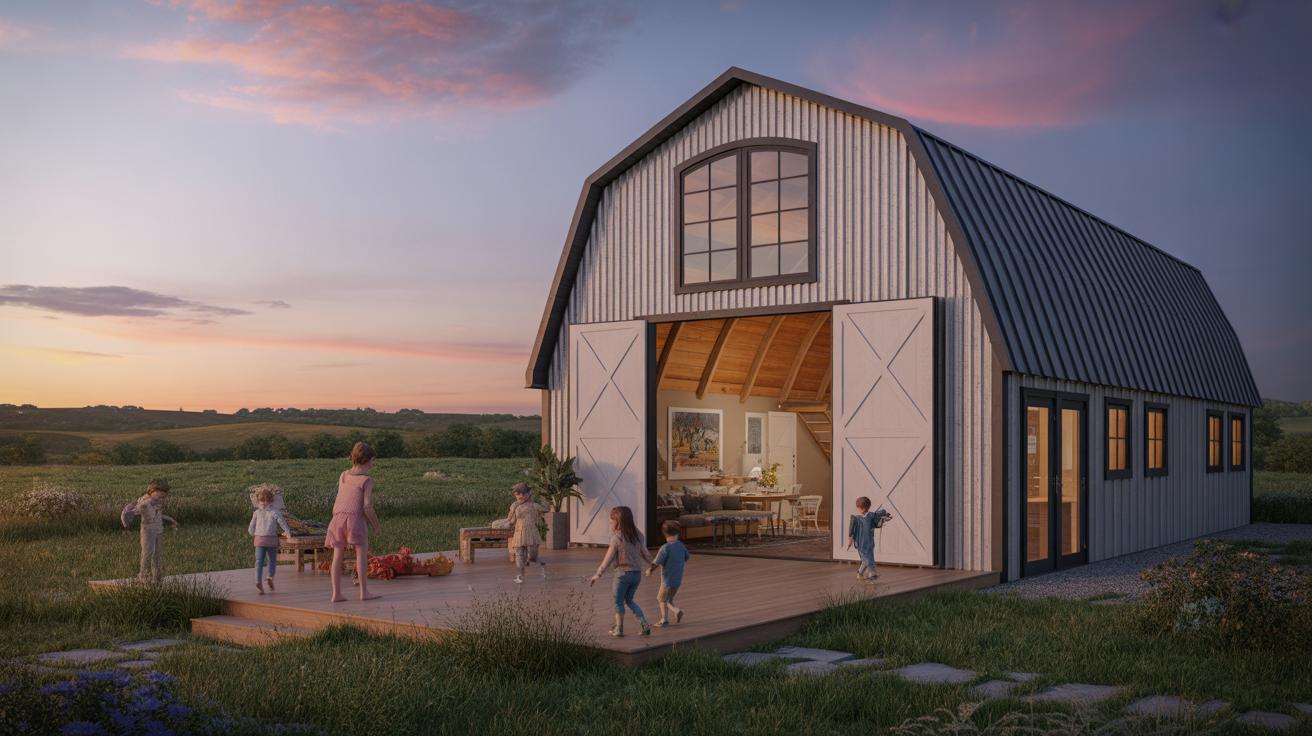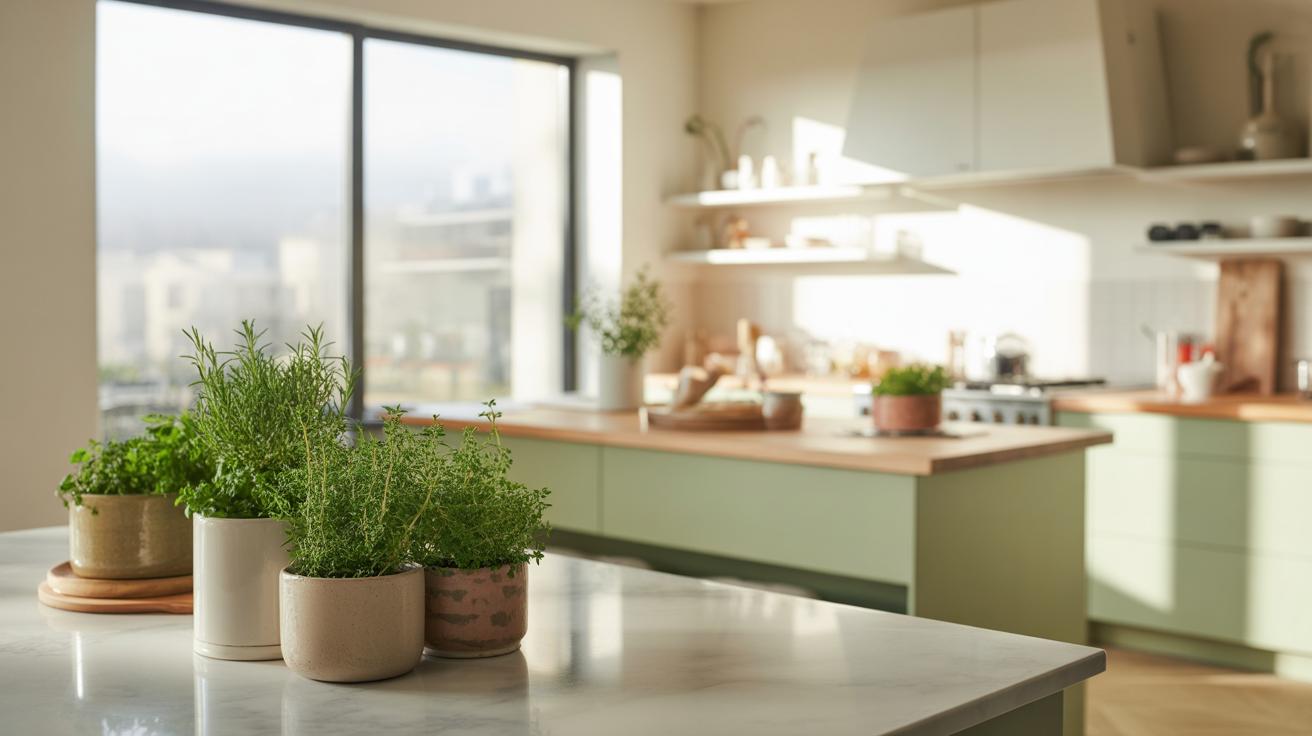Introduction
Modern suburban homes blend functionality with style. Your home’s facade reflects your taste while complementing the surrounding homes. Improving the exterior can boost your home’s value and make it more welcoming. Simple design choices deliver major impact.
The facade plays a vital role in how your house fits into the streetscape. Elements such as materials, colors, and architectural details influence the curb appeal. Street appeal creates a strong first impression for visitors and passersby. Let’s examine practical ways to create a facade that enhances your suburban house and neighborhood beauty.
Understanding the Importance of a Suburban House Facade
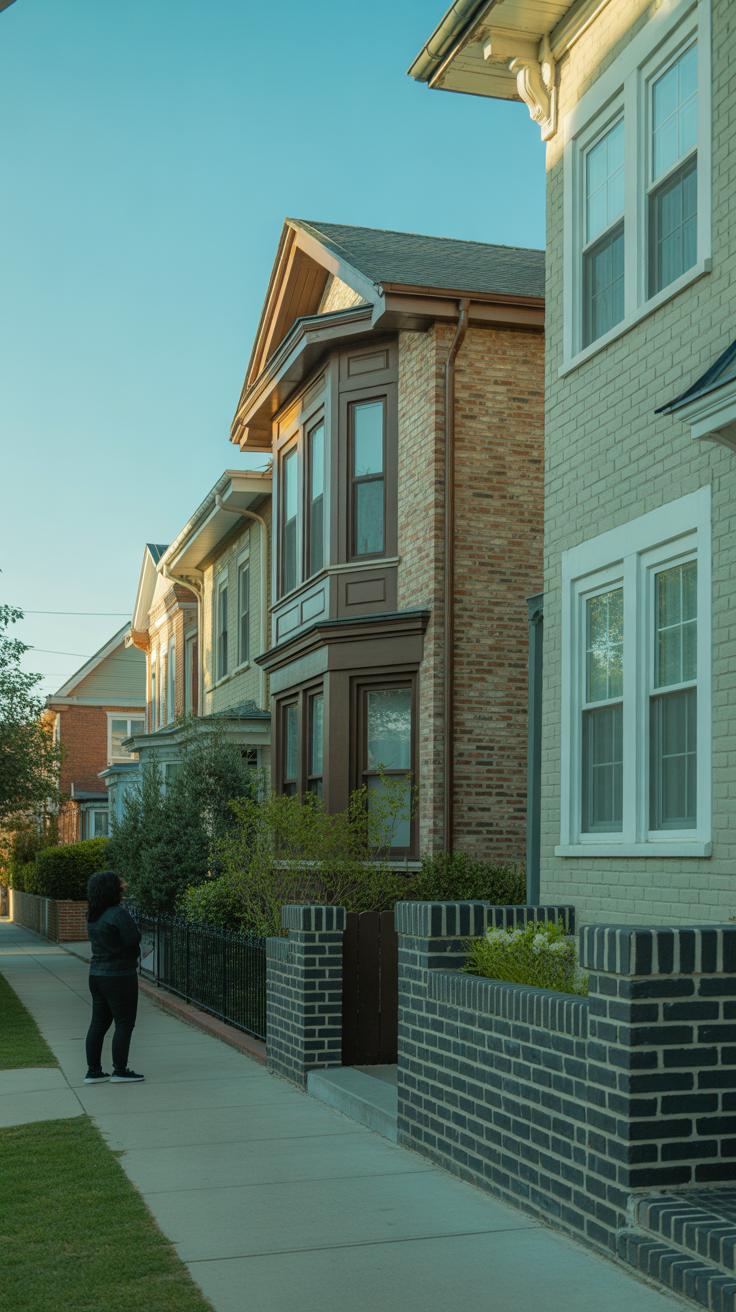
What is a House Facade
A house facade is the front exterior of your home that faces the street. It includes features such as windows, doors, roofline, porch, and any decorative details. This section of your house sets the first impression for visitors and passersby. Its design often shows the style and personality of the homeowner. Common elements you might see are trim colors, shutters, entryway details, and lighting. A well-planned facade balances these components to create a welcoming and visually pleasing look. When you look at the facade, you are seeing more than just the house’s face—you are seeing what defines the home’s character from the street view.
Why Facade Matters in Suburban Settings
In suburban neighborhoods, a facade helps your home fit into the local style and community feel. Facade design creates harmony on your street by blending with nearby homes while showing your unique taste. When it stands out positively, it can attract visitors and buyers, making your home more inviting. A strong facade improves curb appeal, which directly boosts your property’s value. Think about how homes with updated facades often sell faster and for more money. How can your facade reflect what matters most to you and still respect your neighborhood’s look? Careful design choices answered that question while also making your house a value asset on the block.
Choosing Materials for Your Facade
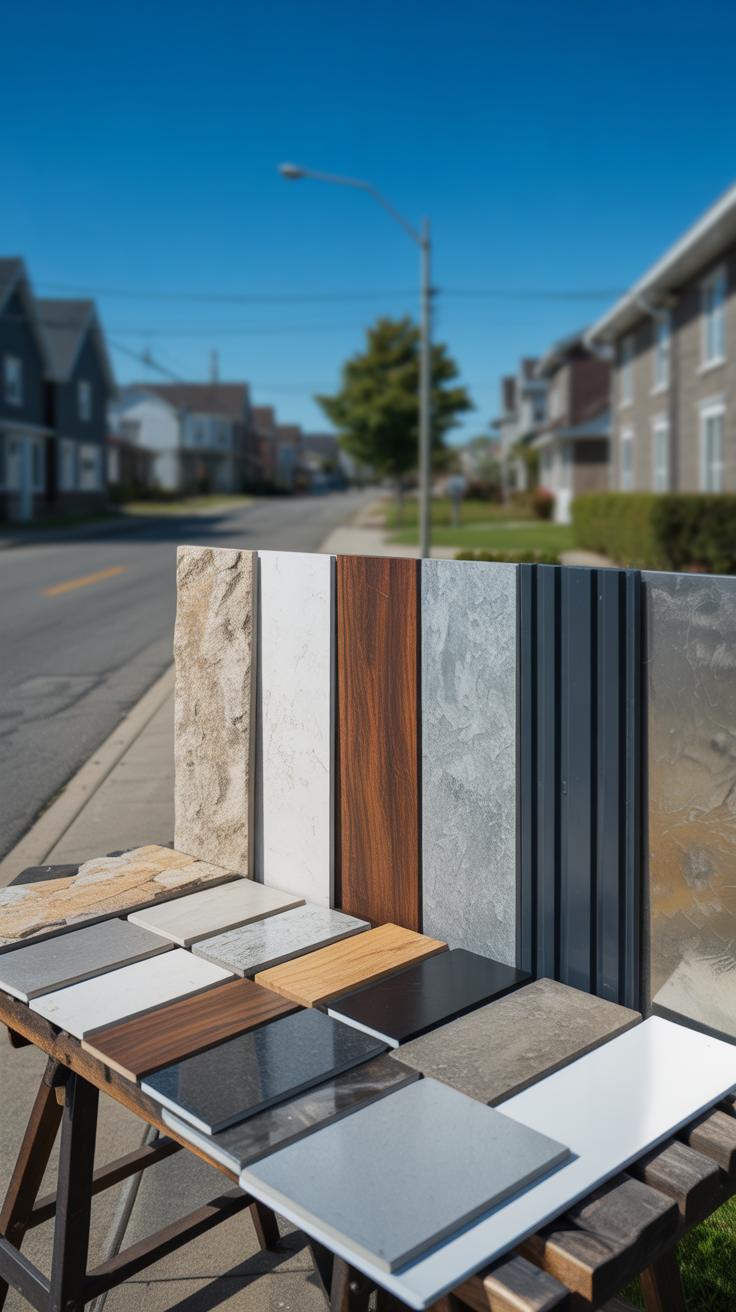
Your choice of materials shapes how your suburban home looks and lasts. Brick offers a classic, sturdy option. It resists weather and fire, needing little upkeep beyond occasional cleaning. Wood creates warmth and charm but calls for regular painting or sealing to prevent rot and insect damage. Stone brings a natural, unique touch while standing strong against the elements; however, it can be costly and heavy to install.
Stucco gives a smooth, clean look and works well in dry climates. It requires repainting every few years and occasional patching. Vinyl or fiber cement siding provides affordable, versatile options with low maintenance. Vinyl rarely needs more than a wash, and fiber cement handles weather well and resists pests.
Choosing your materials means weighing their benefits, costs, and upkeep. What look appeals to you? How much time will you spend caring for your facade? Keep these points in mind to blend your home into the neighborhood and boost curb appeal effectively.
Durability and Appearance of Materials
Durability depends heavily on material choice. Brick and stone stand out for lasting decades without much intervention. These materials maintain their appearance well as weather fades, which keeps your home looking solid and timeless. Wood offers natural beauty but shows wear faster without regular care. Stucco lasts if applied right but cracks in humid or freeze-thaw zones.
Siding materials like fiber cement resist damage from insects and rot better than wood. Vinyl siding handles rain and sun without fading quickly, but might look less authentic than natural materials. Ask yourself how long you want your facade to last and which materials will keep the style you want over time.
Balancing Maintenance with Aesthetic
Picking materials means balancing beauty against care needs. If you want a rustic or natural look, wood is appealing but requires time and effort to maintain. Brick fits little upkeep wishes but may limit your facade’s style options. Vinyl siding demands less work but may not suit every neighborhood’s aesthetic. Think about your own schedule and patience for upkeep.
If low maintenance ranks high, fiber cement siding blends good looks with durability. For a striking but manageable facade, stone or brick plus simple trim could suit you. Ask yourself: How much time can you spend on repairs or cleaning? What style fits your day-to-day life and neighborhood? Your material choice should help you enjoy your home’s exterior with minimal hassle.
Color Selection for Maximum Streetscape Impact
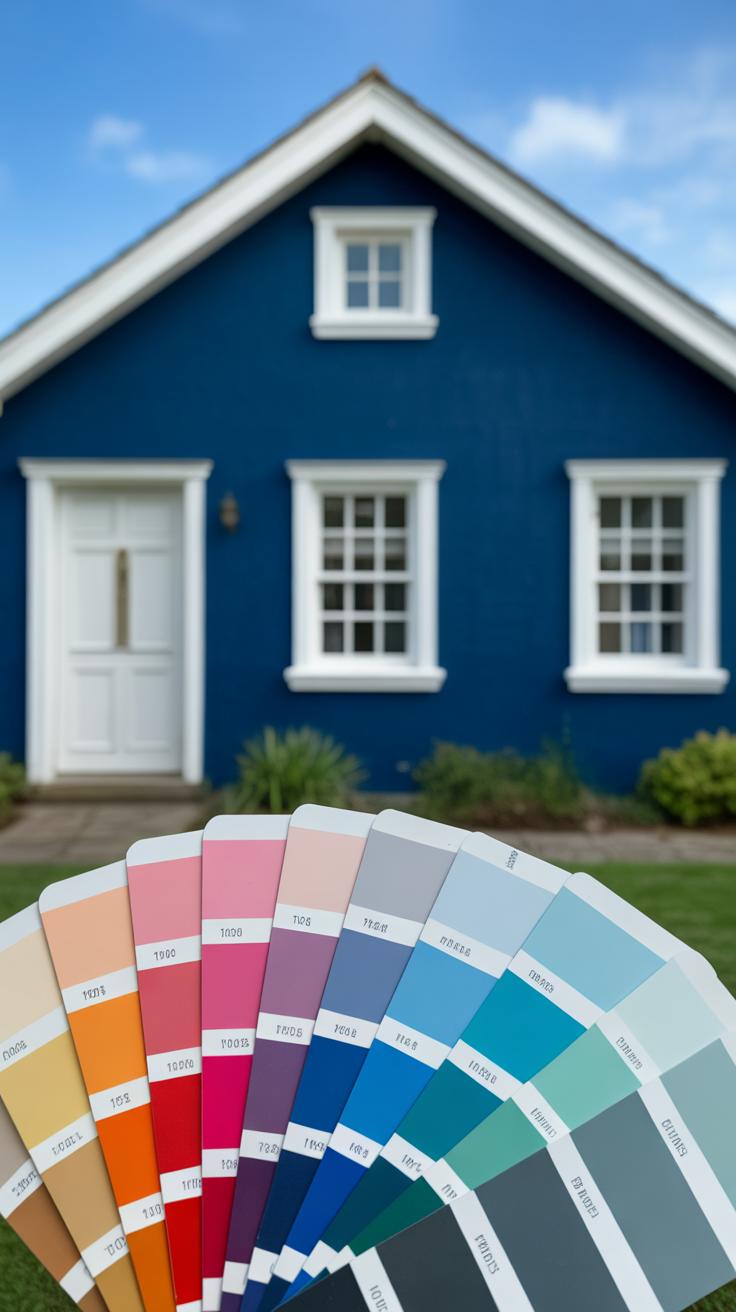
Your choice of color shapes how your home stands out while blending with the neighborhood. Colors influence the mood and perception of your house. A well-chosen palette can make your facade look fresh and inviting, boosting curb appeal.
Consider the style of your home and the overall streetscape when selecting colors. Bright or bold colors may attract attention but risk clashing with nearby homes. Neutral tones offer balance and often promote harmony with surrounding scenery. How can your color choices create a welcoming feel and respect the community atmosphere?
Test paint samples on different walls to see how natural light affects them during the day. Remember, weather and surroundings also influence how colors appear. Avoid picking colors based on small swatches alone. Think about long-term impact and maintenance when choosing your palette.
Choosing Colors that Complement
Observe the colors of neighboring homes before deciding on your facade palette. Matching tones too closely can make your home blend in too much, while clashing hues may disrupt the street’s visual flow. Look for shades that harmonize without copying.
Incorporating landscaping colors helps unify your facade with outdoor spaces. Greens from trees and shrubs pair well with earth tones like taupe, beige, or soft gray. How does your home relate to the plants and natural elements surrounding it?
Choose colors that work well together to create a smooth transition between your house and the environment. This approach enhances overall neighborhood appeal and avoids creating visual tension between properties.
Using Accent Colors Effectively
Accent colors bring character by highlighting architectural features like window frames, doors, shutters, or trim. Select a distinct color that contrasts but still fits within your main palette to draw attention to these elements.
For example, a dark front door against a light-colored facade creates a strong focal point without overwhelming the design. Too many accent colors risk making your home look busy, so limit accents to one or two key areas.
Think about how these pops of color guide visitors’ eyes and invite connection. Could a subtle accent on porch columns or railings add depth and interest? Well-placed accents improve recognition while supporting the home’s style.
Incorporating Architectural Details
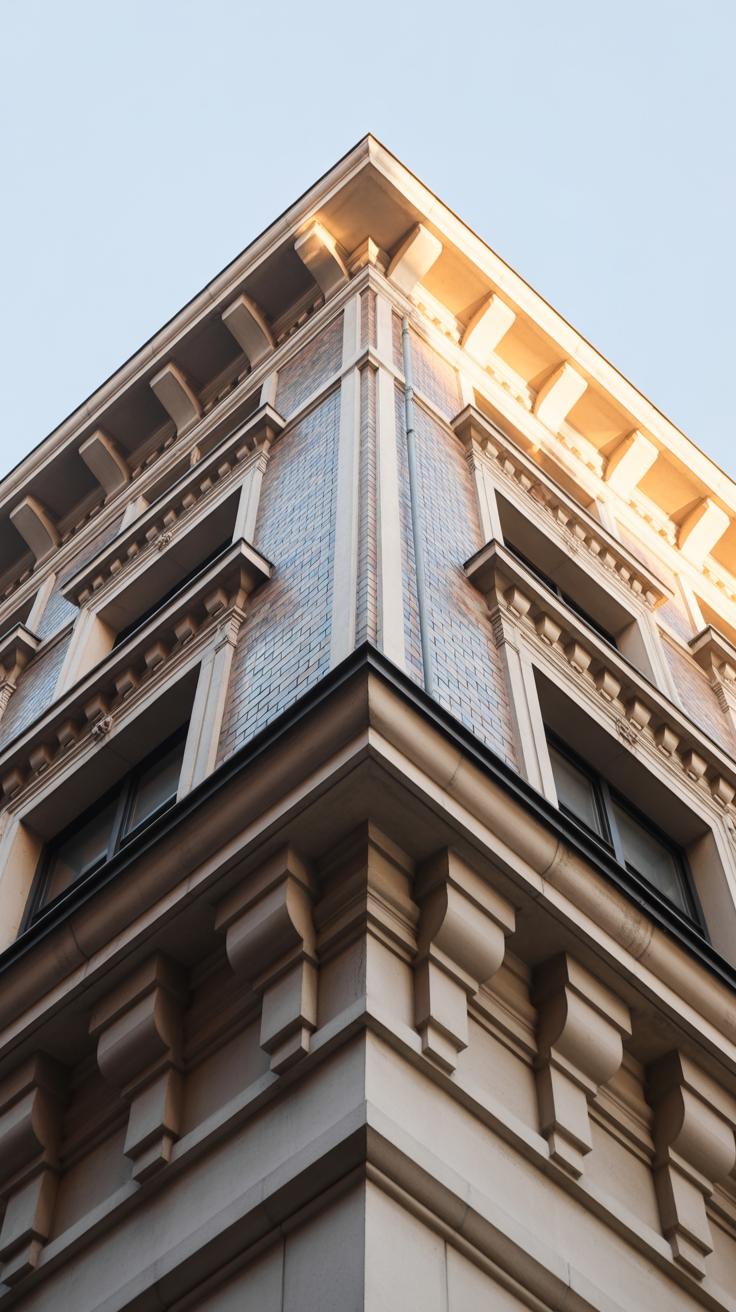
Choosing Features that Fit Your Style
You can select architectural details that match your home’s overall style, whether modern, traditional, or a blend of both. For a modern suburban facade, simple, clean lines often work best. Look for shutters with straight slats or minimal decoration that keep the look sleek. Traditional homes benefit from more ornate trim and classic columns that create a sense of warmth and history. Mixed styles allow more creativity, such as pairing modern porch railings with traditional shutters. Consider what fits your personality and the neighborhood while ensuring harmony. Ask yourself, does this detail strengthen the style I want to present? Your choices should feel natural, not forced, to make your home stand out for the right reasons.
Enhancing Depth and Texture
Flat walls can make a house look plain, but adding details helps break that monotony. Shutters on windows bring depth, casting subtle shadows that change with the light. Trim around doors and windows frames the facade, drawing attention to architectural lines. Columns and porch features add layers that catch your eye and invite exploration. Using materials with varied textures, like wood trim against smooth siding, keeps the surface interesting without overwhelming the design. Think about how light plays on these details. Do they add visual weight or balance? Even small features can create shadows and highlights, turning a simple wall into a façade with personality and dimension that enhances curb appeal.
Creating Inviting Entryways

The entryway sets the tone for your home. Front doors, lighting, and pathways together create the first impression visitors and neighbors notice. A clear, well-lit path directs guests safely and comfortably to your door. Think about wide, smooth walkways made with materials that match your home’s style, such as stone, brick, or concrete.
Your entry space should feel both welcoming and practical. Consider adding a bench or potted plants near the door to make the area inviting. Use durable materials that withstand weather but don’t sacrifice style. Choose elements that fit your neighborhood while adding a personal touch to stand out.
How often do you think about the path and lighting before your front door? Thoughtful planning can boost curb appeal and make coming home a pleasure every day.
Front Door Styles and Finishes
Your front door plays a major role in your home’s facade. Look for doors made of solid wood, fiberglass, or steel. Solid wood offers classic warmth, but fiberglass resists cracking and fading better under different weather conditions. Steel doors provide extra security and require low maintenance.
Modern door designs often include clean lines and minimal detailing, which suit many suburban styles. Consider doors with glass inserts or sidelights to add natural light inside while keeping privacy with textured or frosted glass.
Finish choices can change the door’s mood—matte black or deep navy adds drama, while natural wood stains highlight grain patterns and offer warmth. Pick finishes that hold up to weather and need little upkeep.
Lighting Options for Safety and Appeal
Good exterior lighting improves safety by illuminating walkways and entrance points. Motion-sensor lights are practical; they turn on when someone approaches, alerting you and deterring unwanted visitors.
Wall sconces placed on either side of the door balance light and style. Choose fixtures that match your home’s architectural details, like sleek metal for modern houses or classic lantern designs for traditional looks.
Path lights guide visitors safely to your door and add charm at night. Solar-powered options save energy and are easy to install. Also, consider adding step lights if stairs lead to your entry. Bright, warm-toned bulbs create a cozy feel while avoiding glare.
Using Landscaping to Enhance Facade Appeal
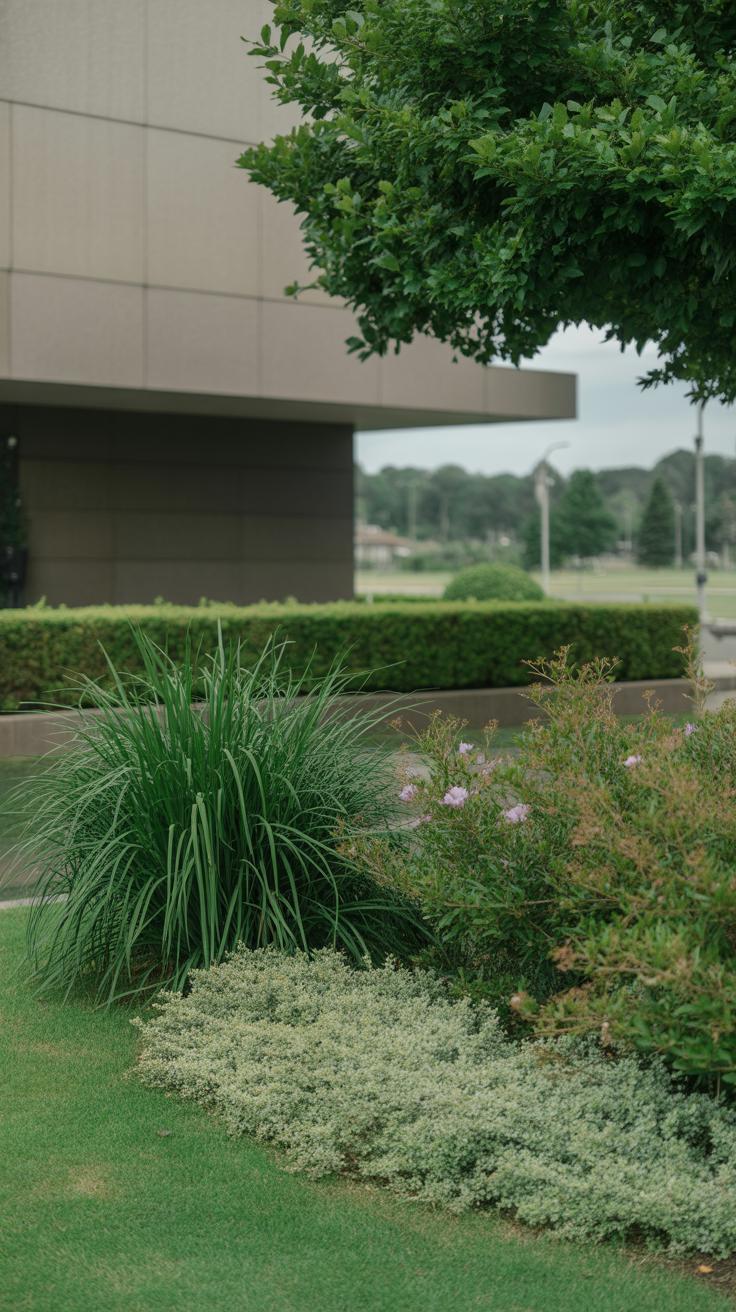
Your suburban home’s facade gains personality and warmth through well-planned landscaping. Plants, trees, and garden beds add texture and color that complement architectural lines. Think of landscaping as a frame that highlights your house.
Place taller trees or shrubs near corners to balance the home’s height without blocking key features. Low garden beds along walkways or front walls soften hard edges. Mix evergreen plants with flowering species to keep the front yard lively.
Colors in your yard should connect with your facade’s tones. If your house has neutral hues, pick plants with vibrant greens, reds, or whites for contrast. For colorful exteriors, subtler greens and pastels work best. Are your current beds arranged to guide the eye naturally toward your door?
Choosing Plants for Year-Round Interest
Select plants that look good through every season to maintain curb appeal. Evergreens like boxwood and holly provide consistent green structure. Flowering perennials like daylilies bloom through summer, while mums shine in fall. Ornamental grasses bring movement into the yard in winter.
Combine deciduous trees with colorful fall foliage, such as maples or dogwoods, with spring bulbs like tulips or daffodils. You can also add shrubs with berries for winter interest. How might layering these choices impact your yard’s depth and appeal year-round?
Designing Pathways and Borders
Use pathways and borders to create clear transitions from sidewalk to door. Define walkways with edging materials like stone, brick, or metal for neat lines. Curved paths add softness to modern angular facades.
Borders around garden beds can use low shrubs or ground cover to set the yard’s perimeter visually. Consider raised beds or retaining walls to add dimension and keep plants tidy. Where could you place a stepping stone path or a narrow gravel border to invite visitors closer?
Integrating Garage Doors into the Overall Facade
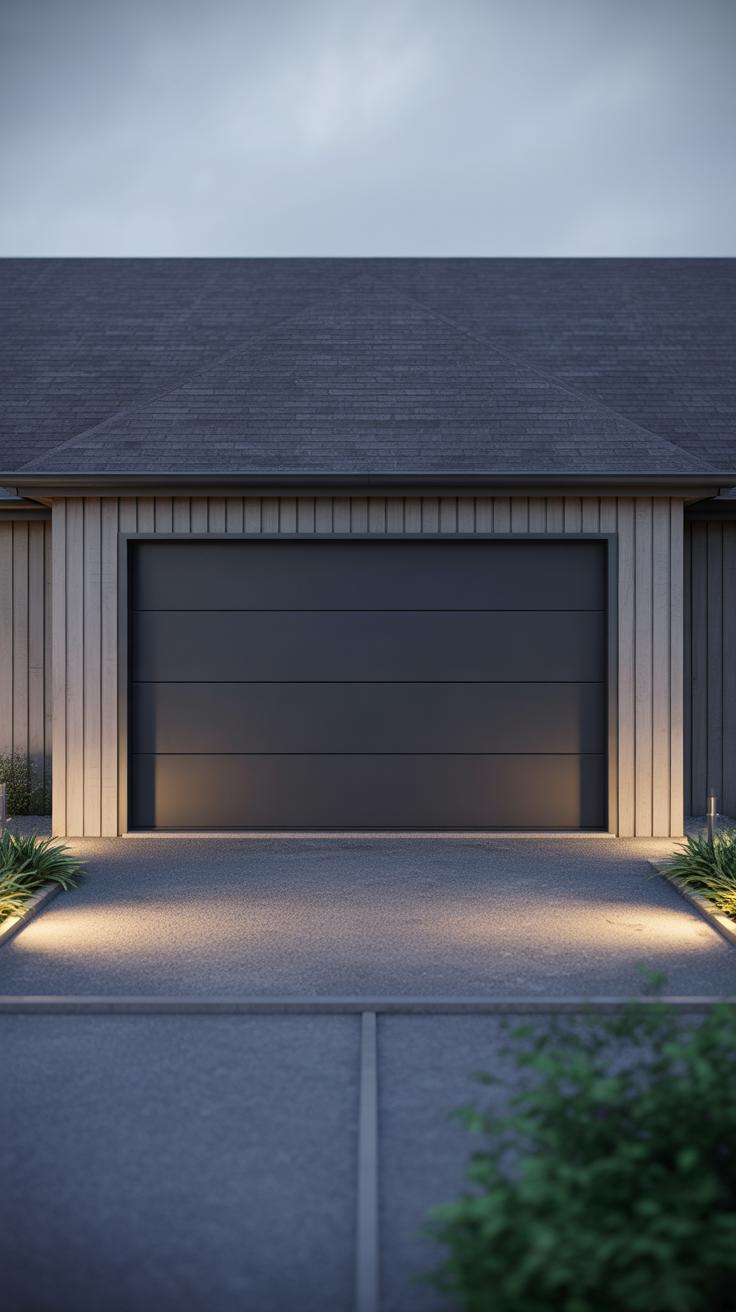
Your garage door takes up a large part of your home’s front view. Choosing the right design helps your house look balanced and neat. Sharp lines and simple shapes often fit well with modern suburban styles. Avoid designs that clash with the main structure or stand out too much. Instead, pick a style that flows with the facade’s materials and colors.
Think about the garage as part of the facade, not a separate element. When the door matches the rest of the house, it keeps the look clean. You can use horizontal or vertical panels that echo the siding or wall textures. This way, the garage feels like it belongs and does not distract from the home’s street appeal.
Ask yourself: Does the garage door draw attention or blend quietly? Aim for cohesion to create a pleasing appearance. To reduce visual disruption, avoid overly large or brightly colored doors. Try to keep the focus on the architectural features that give your house character.
Matching Garage Door Colors and Styles
Choosing the right color for your garage door influences how your home fits in with the neighborhood. A color that matches or complements your siding can bring a unified look. For example, if your house has warm tones, pick a door color within that range, like soft beige or muted brown.
The panel style also matters. Simple, flat panels with clean lines fit modern designs best. Raised panels might work if your home blends traditional with modern elements. Reflect on the street view—do you want your garage door to stand out or stay subtle?
Consider testing door colors against your house paint before committing. A door that works with natural light during the day and looks good at night will boost curb appeal constantly. Small changes in panel style or color can improve how welcoming your home feels from the street.
Adding Decorative Elements to Garage Doors
Windows on garage doors break up large flat areas and add charm. Choose window shapes and grids that align with your house’s windows to create harmony. For example, narrow rectangular windows suit modern homes best.
Hardware like handles, hinges, or decorative nails gives character. Select clean, minimal designs that match your home’s metal finishes, like brushed steel or black iron. These details can turn an ordinary door into a feature without overwhelming it.
If you want a more custom look, consider garage doors with mixed materials, like wood panels combined with glass inserts. These upgrades enhance streetscape appeal and invite curiosity. What kind of statement do you want your garage door to make on your street?
Lighting Techniques for Nighttime Streetscape Appeal
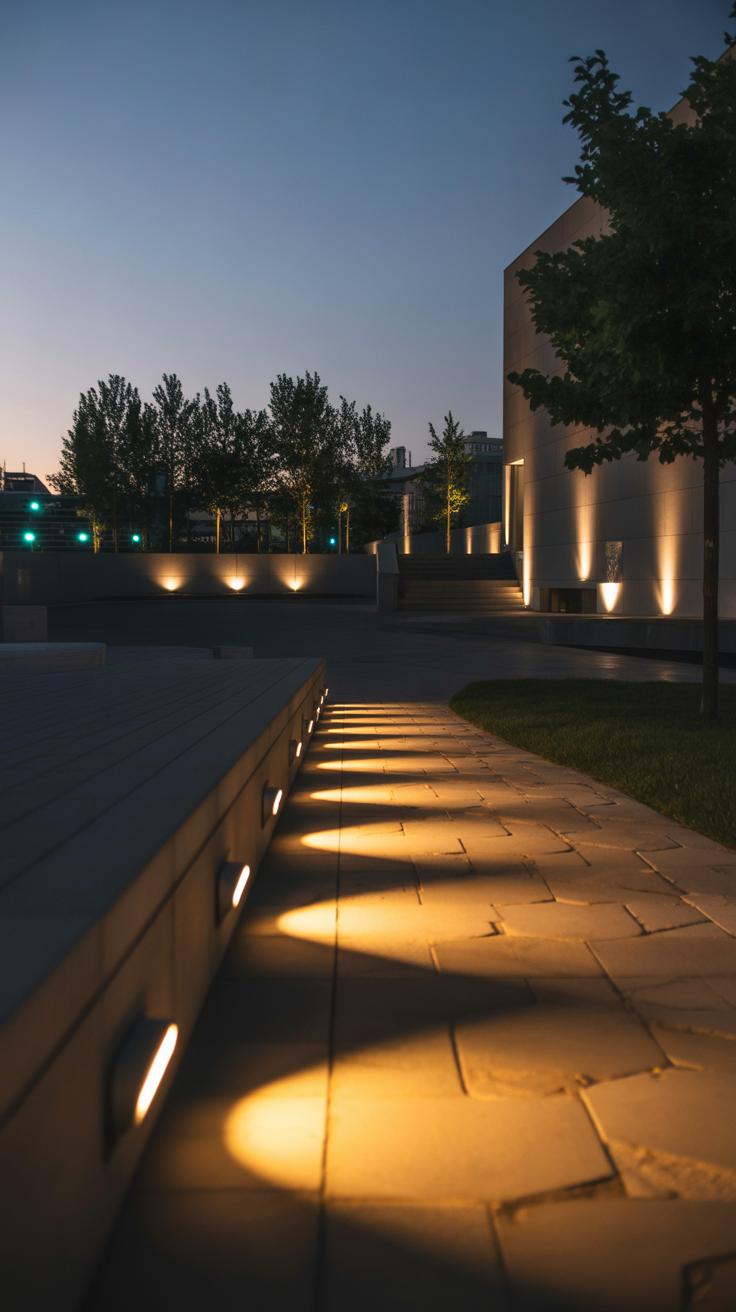
Exterior lighting transforms your suburban home’s facade after dark, making it stand out and feel inviting. When you highlight architectural features like window trims, textured walls, or overhangs, you create depth and interest that draw the eyes of passersby. Simple uplighting on stone or brick accents lifts the design, while downlighting on entryways offers warmth and visibility.
Strategically placed lighting also improves safety. For example, illuminating steps and walkways prevents accidents and guides visitors smoothly to your door. Consider layering lights to balance brightness and shadows, so your home feels secure yet welcoming. Have you thought about how lighting can change your home’s mood at night while keeping neighbors’ styles in mind?
Using lighting as part of your facade design encourages a cohesive streetscape that honors the modern look your neighborhood appreciates.
Accent and Path Lighting
Accent lights focus attention on special parts of your facade, like a unique front door, a modern porch column, or a garden feature. Place small spotlights near these elements, aiming the beam to avoid glare. This highlights your home’s character without harshness.
Path lights serve a dual purpose: they guide guests safely and add rhythm to your yard after dark. Set low-level path lighting along driveways, walkways, and garden borders. This not only improves safety but also creates a subtle glow that invites people to your home.
Try mixing fixed and adjustable fixtures so you can tweak lighting angles as your landscaping grows or your facade changes.
Energy-Efficient Lighting Choices
LED lights use much less energy and last longer than traditional bulbs, making them a smart choice for exterior home lighting. They come in various colors and brightness levels, so you can tailor each light to suit your facade’s style and the atmosphere you want to create.
Solar-powered lights offer easy installation without wiring. Place them where they receive direct sunlight and they’ll charge during the day to brighten your yard at night. This can lower energy bills and reduce your home’s carbon footprint.
When choosing fixtures, look for those designed for outdoor use and with a good balance of efficiency and light quality. What small changes could you make to save energy without sacrificing curb appeal?
Maintaining Your Facade for LongTerm Appeal
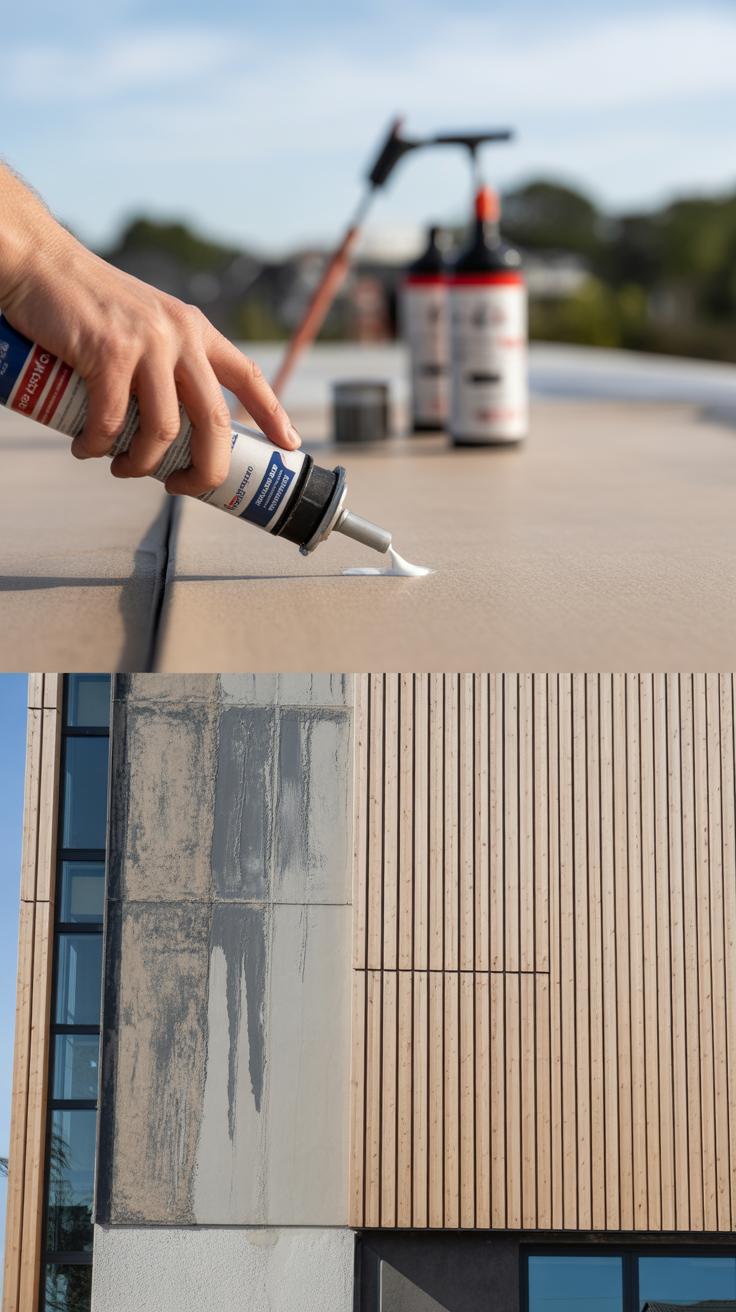
Your home’s facade faces weather, dirt, and daily wear that can dull its look over time. Keeping it fresh requires regular upkeep. Routine cleaning removes grime, mold, and pollutants that settle on surfaces like siding, brick, or wood. Using mild soap and water with a soft brush or power washer set to low pressure protects materials without damage. Don’t forget to clean windows and doors, as clear glass brightens the entire exterior.
Inspection plays a key role in preserving your facade. You should look closely for cracks, peeling paint, or damaged caulking. Early detection of problems like chipped paint or loose siding stops them from worsening. What small signs might you be missing on your facade? Checking your home’s exterior every season helps catch issues before they become costly.
Regular Cleaning and Inspection
Consistent cleaning goes beyond curb appeal; it protects your materials. Dirt and moisture can lead to mold growth or rot, especially on wood surfaces. Washing down your facade two or three times a year prevents buildup and helps paint last longer. After cleaning, inspect for dents, warping, or faded spots in paint and trim.
Look inside gutters, around windows, and near ground level for signs of water damage or pests. If you spot any wear or damage, mark it for repair. Regular checks ensure your facade keeps its modern look and stays structurally safe. Are you confident your cleaning routine uncovers hidden problems?
Timely Repairs and Updates
Fixing small problems quickly protects your facade from larger damage. Address peeling paint or chipped siding immediately to stop moisture from seeping in. Recaulking windows and doors when cracks appear keeps drafts and water out. Repairing loose shutters or broken fixtures helps maintain your home’s sharp style.
Updating worn features refreshes your home’s look and matches neighborhood standards. Swapping outdated house numbers, lighting fixtures, or door hardware adds subtle modern touches. These updates often cost less than full replacements and help your home stay appealing longer. Which repairs or updates could boost your facade’s curb appeal right now?
Balancing Modern Trends with Neighborhood Character
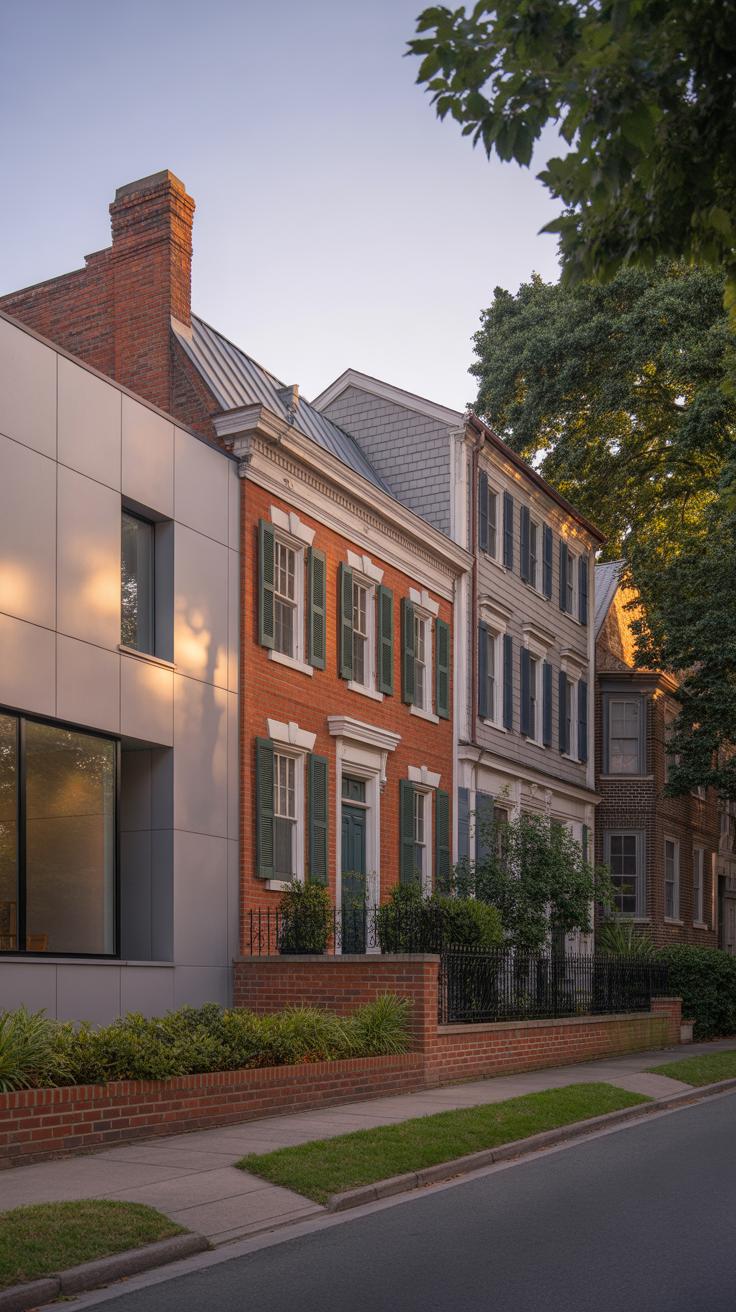
Your home’s facade should fit well with the surrounding houses while showing your personal touch. Before changing your exterior, consider the overall look of your neighborhood. Are the homes mostly traditional, or do they have subtle modern touches? This question guides how to add new features without causing a clash.
Respecting the neighborhood helps maintain harmony on the street. You want your house to stand out in a positive way, not feel out of place. Think about using materials and colors that already appear in your area but introduce modern styles in smaller ways, like door hardware or light fixtures.
How can you show your style while keeping the look cohesive? Start small. Blend clean lines with classic shapes. Swap out bulky railings for sleek metal ones. These changes can refresh your facade and keep it connected to the area.
Respecting Local Architecture
Start by learning about the styles common in your neighborhood. Visit local historical societies or check city websites for design guidelines. Some areas have rules about what changes you can make, especially if homes have historic value.
Identify key features that define your neighborhood, such as roof shapes, window styles, and exterior colors. Respecting these elements ensures your updates won’t disrupt the streetscape.
Imagine your house as part of a larger story. What architectural details are typical here? Knowing these helps you decide which features to keep and which to update. This approach keeps your home aligned with local character while still letting you express yourself.
Incorporating Modern Features Thoughtfully
Introduce modern touches that enhance rather than overwhelm. For example, replace old lighting with fixtures that feature simple shapes and warm tones.
Consider new door designs with clean lines but traditional wood or color. Adding stone or brick accents can create texture while blending new and old styles.
Windows offer a chance to add modern energy efficiency. Choose designs with sleek frames but shapes that match original openings. These details maintain charm but bring in updated performance.
Think about your choices as a conversation with your neighborhood. Which elements speak well together? Which ones clash? Make thoughtful choices that balance fresh appeal with lasting fit.
Conclusions
Optimizing your suburban house facade brings visible benefits. Thoughtful design choices add value and attractiveness without drastic renovation. Use materials and colors that match the local style and your preferences. Add architectural features that create interest and harmony.
Consider your neighborhood streetscape to select designs that fit well. Your home should look inviting and well-maintained. Practice good upkeep and update details as trends evolve. With care and creativity, your house facade will stand out positively among other homes.


